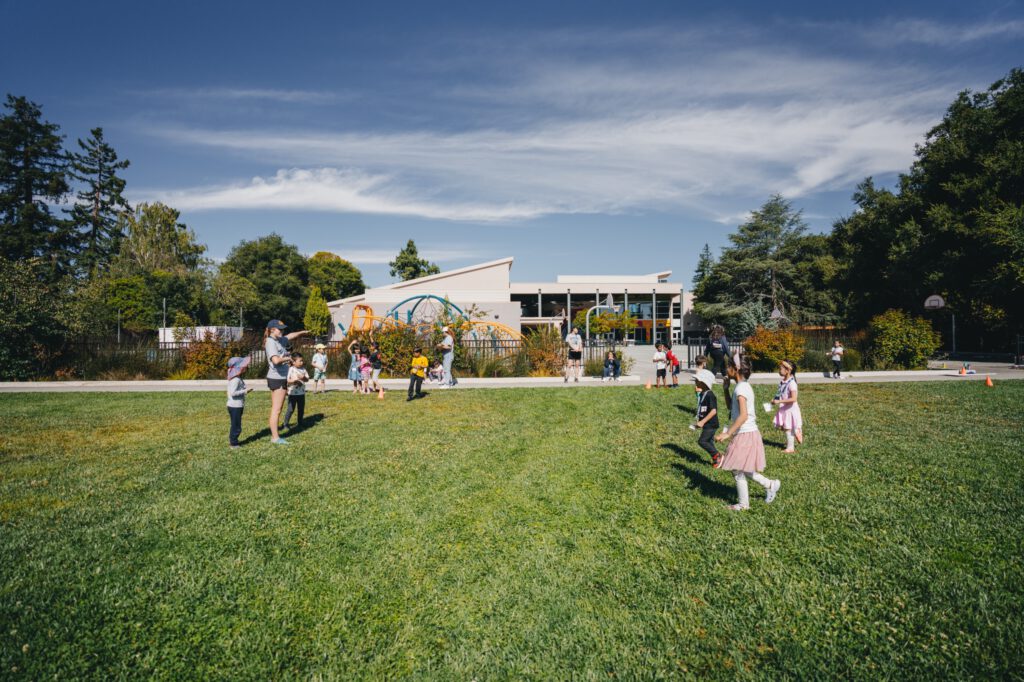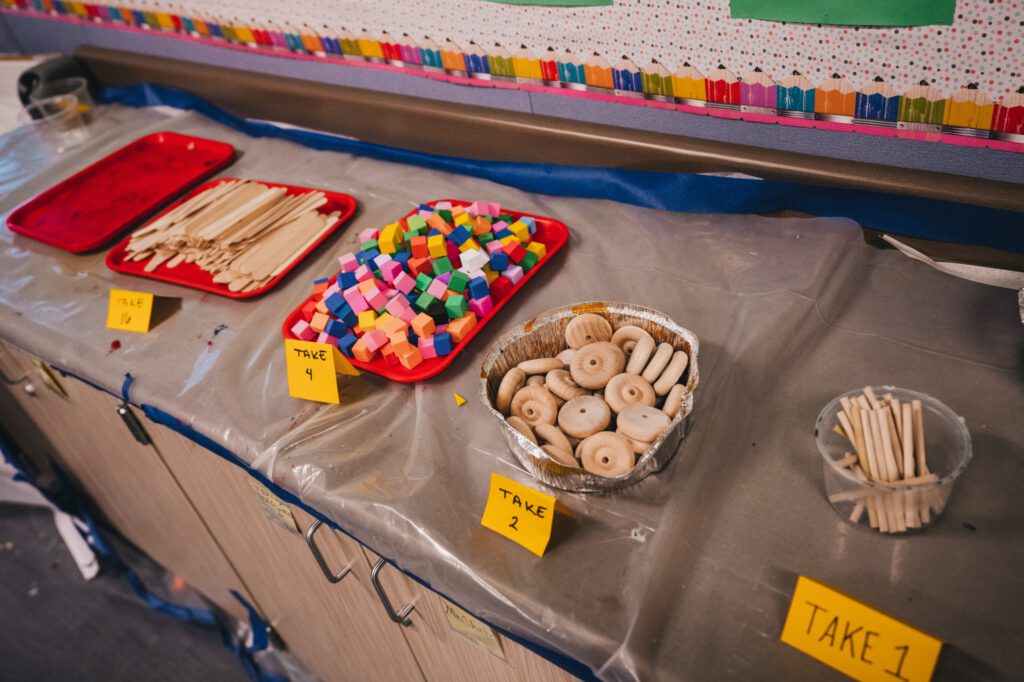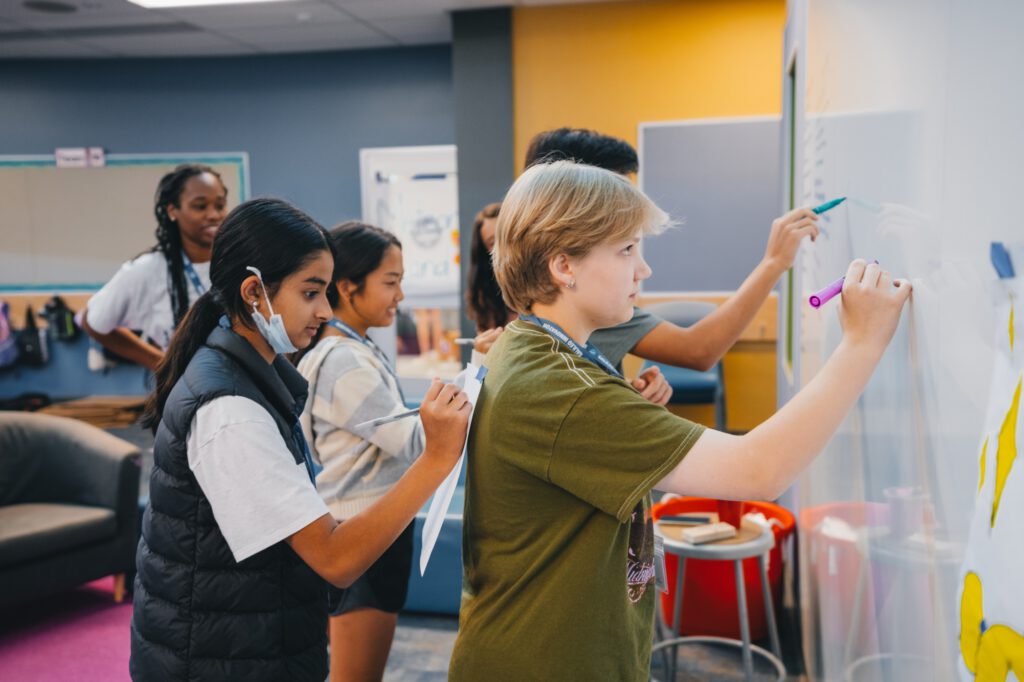Did you ever have an Etch-A-Sketch®, the drawing toy which uses a pulley system to create line drawings by displacing aluminum powder on a plastic screen? What about a Spirograph®, which utilizes gears to create geometric designs from colorful arcs? Or the small spinning machine that depends on centrifugal force to splatter paint in colorful designs? What these toys (each with more than 50 years of popular play) have in common is the application of science to create visual art. More recent examples of art enhanced by science are the use of digital technology to create animated and performance art, such as Pixar animation, or an Intel drone show like the one choreographed for Coachella.
Science and art, though different in some ways, share a creative energy that fascinates kids. Connecting and combining art and science education can produce powerful ideas that lead to incredible sights and sounds. A STEAM camp that features science, technology, engineering, art and math in project-based learning invites kids to immerse themselves in an environment where art and science are used in realistic contexts to solve authentic problems.
Art and Science in Creative Contexts
On a large scale, architects regularly combine art and science to create masterful structures that stretch the limits of form and function. Inspired by nature, Frank Lloyd Wright favored styles that blended into their natural surroundings. Using physical science properties and natural materials, Wright created one-of-a-kind dwellings that remain as unique testaments to his creative vision. By contrast, Zaha Hadid’s architectural designs stand in stark contrast to their surroundings. With a background in mathematics, geometry figured prominently in her designs, prompting observers to question how the massive structures were supported. Though their processes and products were very different, both architects worked at the exciting interface of art and science.
Musicians, too, create their work at the intersection of art and science. Sound waves produce the pleasing sounds and rhythms that are universally enjoyed. Prolific composer Ludwig Van Beethoven had science on his side when he lost his hearing. He was able to continue composing with the help of the vibrations from sound waves and his memories of sound.
Art and Science Share Common Thinking Skills
Albert Einstein, dubbed the Father of Modern Science, said, “The greatest scientists are artists as well.” An accomplished violinist, he maintained a lifelong relationship with music, relying on it to motivate and inspire him. There are many thinking skills that connect art and science. They include:
- Observation – Using the five senses to make observations of the world is common to both artists and scientists. As they learn to strengthen their powers of observation, they may favor or refine one sense over the others. For example, chefs and nutritionists hone their sense of taste, photographers and surgeons focus on the sense of sight, while musicians, audiologists and sound engineers concentrate on hearing.
- Problem solving – Both scientists and artists must employ creative problem solving in their work. Research conducted with college art students and science students revealed that though there were minor differences in learning styles, there was no significant difference in a range of problem-solving skills tested.
- Systematic thinking – In the case of science, systematic thinking may be viewed as contrary to creativity. However, like scientists, artists set goals and implement plans, helping them to understand and act upon challenges. Though both think systematically, Einstein suggested scientists are more logical and artists more intuitive in their thinking.
- Originality – As prolific innovators, artists and scientists are known for their original thought. To accomplish this, they must exercise and trust their imaginations; they must be willing to take risks and try new things.
- Making connections – Art and science require recognition of patterns and observation from different perspectives. Both are enhanced when kids exercise curiosity and make connections to their prior knowledge.
Connecting Art and Science at Camp
A STEAM (Science, Technology, Engineering, Arts and Mathematics) camp represents an exciting opportunity to connect art and science in real-world contexts. At Camp Galileo, kids entering pre-K through 5th grade can experience one of four themes through a week of connected art and science projects and outdoor play. The chance to apply both art and science provides a variety of different ways to approach the theme, which engages many centers in the brain and enhances campers’ understanding of complex topics, including U.S. geography as seen on a cross-country road trip, the human body and space exploration. A makerspace challenge provides campers the opportunity to utilize science and art to create bold and useful innovations.
Middle school kids, too, can benefit from camp programs combining art and science education. Galileo Summer Quest offers week-long opportunities to concentrate on majors like YouTube Producers, Virtual Reality, Chefology and Mystery Room: The Great Escape. With additional titles, including Catapult Builders, Go-karts, Robot Pet and Mobile Game Design, tweens can focus on creating authentic projects that feature science and art. Each highlights science and technology, while campers design and engineer solutions to realistic challenges. Whether indulging in a personal passion or pursuing a new interest, there is something to satisfy every curiosity. In addition, all campers learn the Galileo Innovation Approach®, which consists of the innovator’s mindset, the innovator’s knowledge and the innovator’s process. The GIA is interwoven into every Galileo camp experience.
Designs for the Future
Connecting art and science education enhances the experience for kids and allows them to engage more deeply. A camp that emphasizes design thinking teaches a process that works for both art and science innovation, helping campers trust their ideas and implement them with confidence. With help from camp staff and the GIA, kids learn to persist through setbacks and conquer challenges in order to produce incredible sights and sounds. The balance inherent in this type of experience is invaluable to kids who will someday grow into scientists, artists or like Albert Einstein, enthusiasts of both.
To find a camp that combines art and science learning in your area: San Francisco, Southern California, and Chicagoland. Sign up for our mailing list to keep up-to-date on our camp happenings and innovation resources. Or, you can register for camp today.



